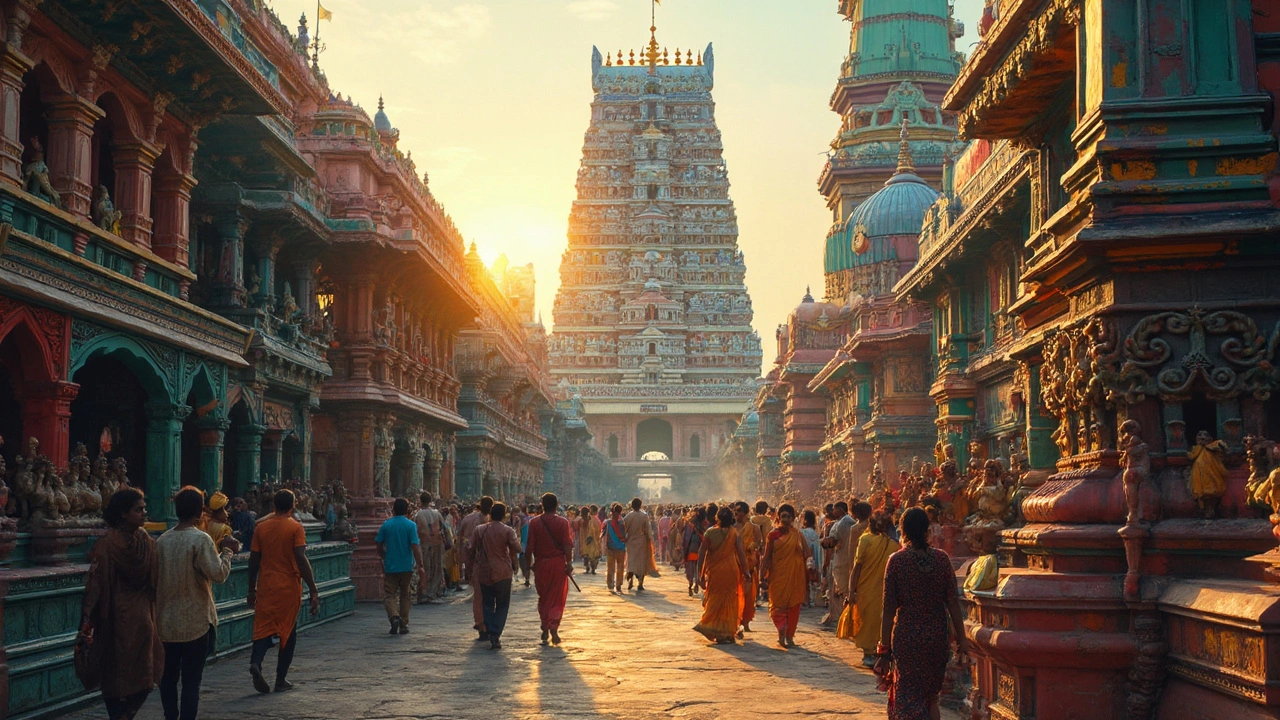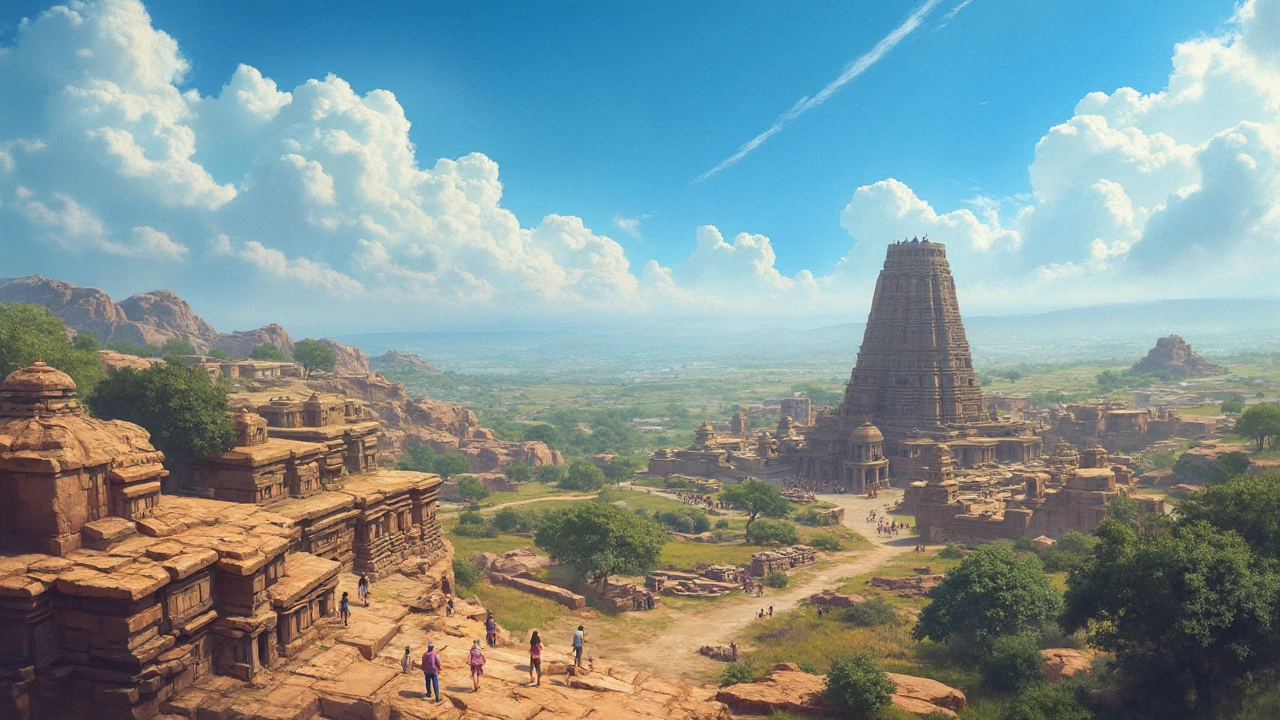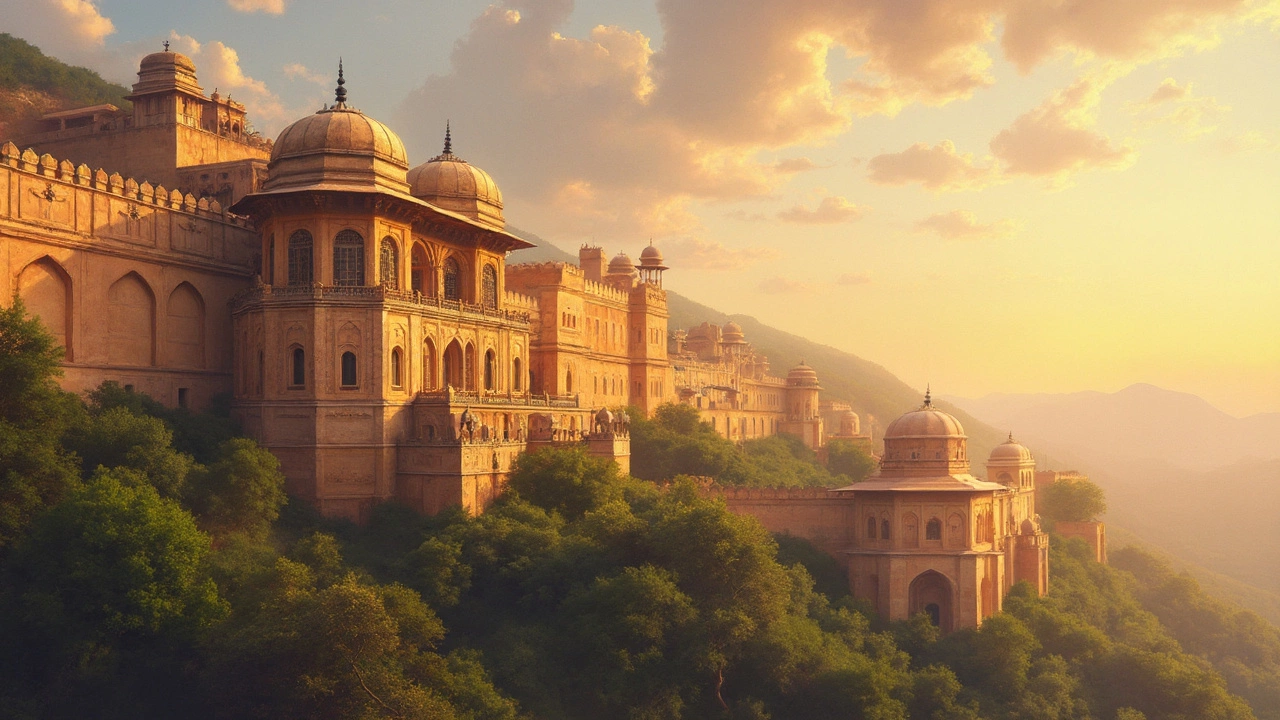India's rich heritage is nothing short of awe-inspiring, offering a tantalizing glimpse into centuries of culture, history, and architectural brilliance. Ever wondered what it feels like to walk in the footsteps of kings and emperors? Well, India's got you covered. With an endless list of heritage sites bursting with stories waiting to be discovered, each nook and cranny of this incredible land speaks volumes about its vibrant past.
Take the majestic fortresses spread across the country, for instance. They're not just giant stone structures. Each one is a time machine offering insights into intense battles, royal intrigues, and the dazzling lifestyles of erstwhile dynasties. Want to know how it feels to be in a real-life Game of Thrones setting? Try Rajasthan's forts like Amber or Mehrangarh. It's more than just stone and mortar; it's an experience.
Majestic Fortresses
When it comes to showcasing India's historical grandeur, fortresses across the country stand as colossal testaments of its past. These aren't just old, crumbling walls; they're vibrant stories from centuries ago, each with its own unique tale.
Take the Amber Fort in Rajasthan. Nestled on a hilltop, it's a perfect blend of Hindu and Mughal architecture. What hits you first is the beautiful artistry on display, from intricate carvings to the dazzling Sheesh Mahal, or 'Mirror Palace', which can light up a room with just a single candle.
"Amber Fort represents the zenith of Rajput architecture, standing testament to the artistic genius of that era," - Historians' Journal of India
Moving south, we encounter Golkonda Fort in Hyderabad. Known for its advanced acoustic system where a hand clap at a certain point below the dome reverberates and can be heard at the hilltop pavilion over a kilometer away. Amazing, right? This was used as a warning system in case of any invasion.
The Strategic Masterpiece: Chittorgarh
Chittorgarh, another gem located in Rajasthan, is the largest fort in India. Imagine a city within a fort - temples, palaces, and water bodies - it's like stepping into an epic historical saga. The sprawling complex tells tales of valor and sacrifice from the times of imperial rule. Visiting here is akin to diving headfirst into history.
Travel Tips for Exploring Forts
- Start early in the morning to avoid crowds and catch that gorgeous sunrise.
- Wear comfortable shoes; these forts are vast, and you'll be doing quite a bit of walking.
- Hiring a guide can enhance the experience, providing rich narratives that enrich your visit.
- Check for any light and sound shows in the evening, which provide a dramatic retelling of the fortress's history.
These heritage sites aren't just about the stones; they're carriers of immense cultural and historical significance. So, make sure these majestic fortresses are on your travel radar!
Ancient Temples
When it comes to India, temples aren't just places of worship. They're historical chronicles etched in stone, capturing the spirit of past eras. Across the length and breadth of this vast country, you'll find a multitude of temples, each with an intriguing story to tell. Many are architectural masterpieces that showcase the brilliant skills of ancient artisans.
One of the stars of the show is the Brihadeeswarar Temple in Tamil Nadu, a UNESCO World Heritage Site. Standing tall for over a thousand years, this temple is dedicated to Lord Shiva and is an outstanding example of Chola architecture. Fancy some mind-boggling stats? The temple's main tower, known as the Vimana, is one of the tallest in the world and was constructed without the use of modern technology. Imagine that!
Venturing north, the Khajuraho Temples in Madhya Pradesh will leave you speechless with their exquisite sculptures. Built by the Chandela dynasty between 950 and 1050 AD, these temples are famous for their intricate erotic carvings. They've rightly earned a place on the UNESCO list too.
The Mystique of Varanasi
Then there's Varanasi, perhaps the oldest living city in the world, where countless temples line the ghats of the sacred Ganges River. Kashi Vishwanath Temple is a must-visit here, revered and thronged by pilgrims all year round.
Practical Travel Tips
Thinking of visiting? Timing is everything. Try to plan your trip during religious festivals to catch these heritage sites at their vibrant best. Also, some temples may have specific dress codes, so it's a good idea to check in advance. And don't forget to savor the local culture and cuisine around these attractions—sometimes the journey is as rewarding as the destination!

Historical Monuments
When we think about India's historical monuments, the mind often drifts to images of grand palaces, intricate carvings, and towering domes. These structures aren't just visually striking—they're like open-air museums offering profound insights into the past. Let's unpack some of the iconic monuments you might want to add to your bucket list.
The Taj Mahal
The first on our list is none other than the Taj Mahal. One of the New Seven Wonders of the World, this white marble mausoleum situated in Agra is a testament to eternal love. Built by Emperor Shah Jahan in memory of his wife Mumtaz Mahal, its awe-inspiring symmetry and intricate inlay work catch everyone off guard. Curious to know the best time to visit? Try early morning sunrise for a sight that's etched in memory.
The Red Fort
Next up is the Red Fort in Delhi. Constructed during the Mughal era, this red sandstone fortification isn’t just a symbol of power but also a brilliant example of Mughal architecture. Today, it hosts India's Independence Day celebrations which might be a fun time to explore it among the throngs of locals.
Qutub Minar
Another gem in Delhi is the Qutub Minar, the world's tallest brick minaret at a staggering height of 73 meters. This UNESCO World Heritage site is part of the Qutub Complex, which includes a mosque and other ancient structures. Its tapering design and intricate carvings are a photographer's delight.
Konark Sun Temple
Head over to Odisha, and you'll find the Sun Temple at Konark, shaped like a colossal chariot with intricately carved wheels and pillars. Dating back to the 13th century, it’s a spectacular ode to the Sun God. A visit during the Konark Dance Festival puts you right in the heart of vibrant culture and history.
| Monument | Location | Established |
|---|---|---|
| Taj Mahal | Agra | 1632 |
| Red Fort | Delhi | 1648 |
| Qutub Minar | Delhi | 1193 |
| Konark Sun Temple | Odisha | 1255 |
These are just a few highlights of India's treasure trove of historical monuments. They offer not just an exploration of the past but a tangible connection to the cultural fabric that defines the country. Whether you're soaking in the romantic vibes of the Taj or marveling at the engineering feats of Qutub Minar, each visit promises a new perspective on a storied past. So, when's your next trip?
Cultural Significance
When it comes to the cultural significance of India's heritage sites, it's not just about pretty buildings or ancient ruins. These sites are the heart and soul of a civilization that's been around for thousands of years. Temples, palaces, and forts are more than just relics; they're living, breathing stories of history and culture.
For starters, the rituals and festivals that take place at these sites are nothing short of spectacular. Take the Khajuraho temples, famous for their intricate carvings and sculptures. Every year, a dance festival lights up the place with energy, attracting artists from all over the world to perform against the backdrop of these marvelous monuments. Who wouldn't want to witness ancient history harmonizing with contemporary art?
Cultural Icons of India
Then there's the undeniable charm of cities like Varanasi and Jaipur that serve as pulsating cultural hubs. Varanasi, often called the spiritual capital, is like a magnet for those seeking both peace and enlightenment. Watching the Ganga Aarti here is an experience that stays with you forever. Jaipur, with its blend of Rajputana grandeur and colorful local markets, captures the essence of royal India
| Site | Annual Visitors (millions) | Key Attraction |
|---|---|---|
| Taj Mahal | 7-8 | Iconic Mughal Architecture |
| Qutb Minar | 3.9 | World's Tallest Brick Minaret |
| Sundarbans | 4.4 | World's Largest Mangrove Forest |
These places are like snapshots of India's culture, giving us a glimpse into the past while staying relevant in the present. The spiritual vibes, the festivals, and the everyday rhythms of life at these sites create a tapestry that is uniquely Indian. It's a blend of the sacred and the secular, the old and the new, coming together to form a rich cultural legacy.

Travel Tips
Traveling to explore India's rich heritage can be an exhilarating experience, but a little planning goes a long way. Let's dive into some practical tips that'll make your journey hassle-free and unforgettable.
Best Time to Visit
Weather plays a huge role in your travel experience. The best time to visit most heritage sites in India is between October and March when the weather is generally cooler, making your exploration much more comfortable. Avoid the monsoon season, especially if you plan to visit outdoor sites.
Local Transportation
Getting around is pretty easy if you know what to expect. Cities often have a mix of modern options like metros and traditional choices like rickshaws. For longer journeys between Indian states, trains are super popular. India's railway ticketing system can be a bit overwhelming at first, but platforms like IRCTC are quite user-friendly once you get the hang of them.
Packing Essentials
- Comfortable Shoes: Many sites require a fair bit of walking. Pack sturdy footwear.
- Layered Clothing: India's weather can vary dramatically. Layers are your friend.
- Sunscreen and Hat: Even in cooler months, the sun can be fierce, especially in places like Rajasthan.
- Water Bottle: Staying hydrated is key, especially in hotter regions.
Understanding Cultural Norms
Respect local customs, especially at religious sites. For instance, many temples require you to remove footwear before entering. Also, dress modestly—a good rule of thumb is to keep your shoulders and knees covered.
Budgeting Considerations
Heritage sites often have entrance fees that vary for domestic and international tourists. Budget accordingly and consider investing in combo tickets if you plan to see multiple sites in one area. They often offer better value.
Staying Connected
| Network Provider | Coverage |
|---|---|
| Jio | High |
| Airtel | High |
| Vodafone | Moderate |
Local SIM cards like Jio and Airtel offer good coverage and cost-effective data plans, keeping you connected and ready to share those Insta-worthy moments!
